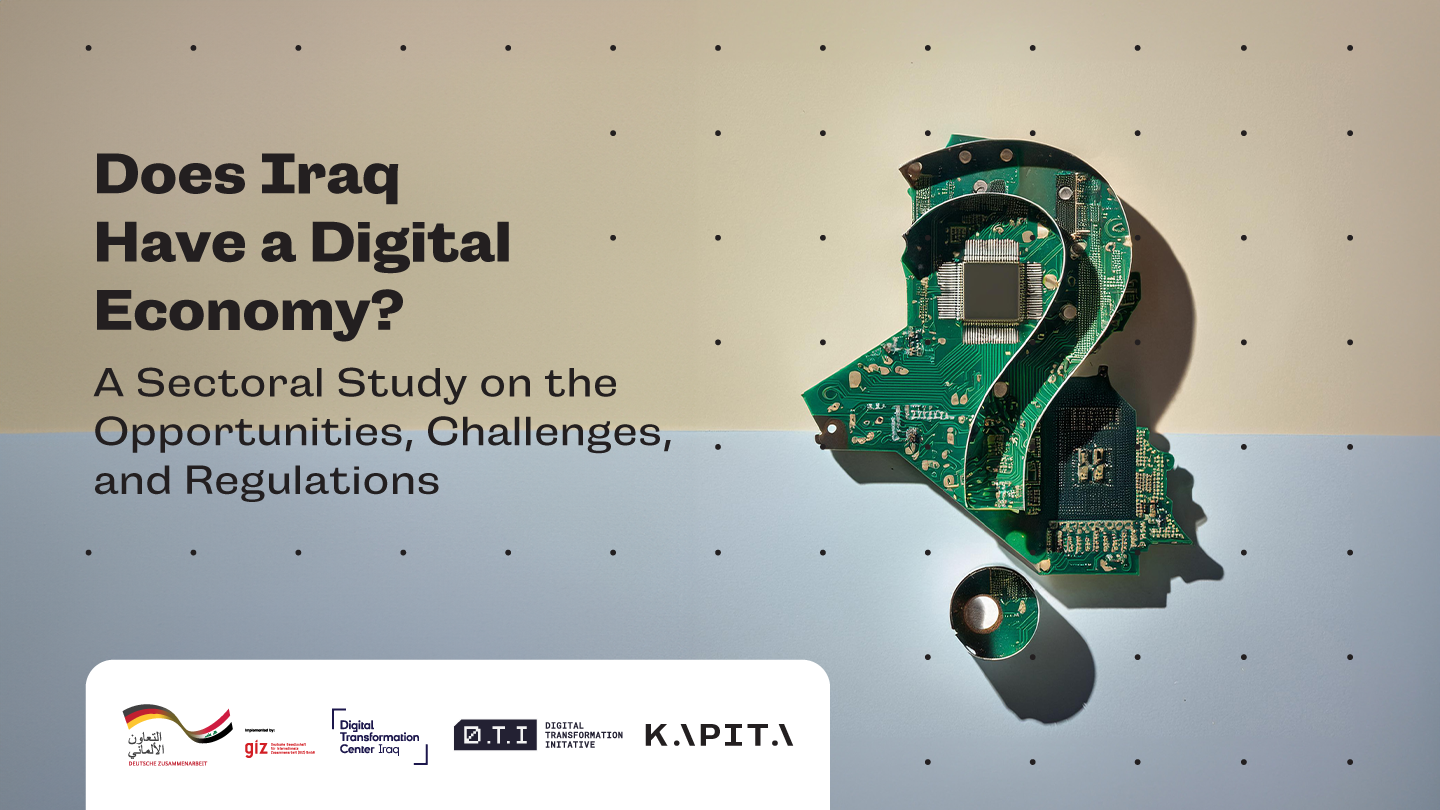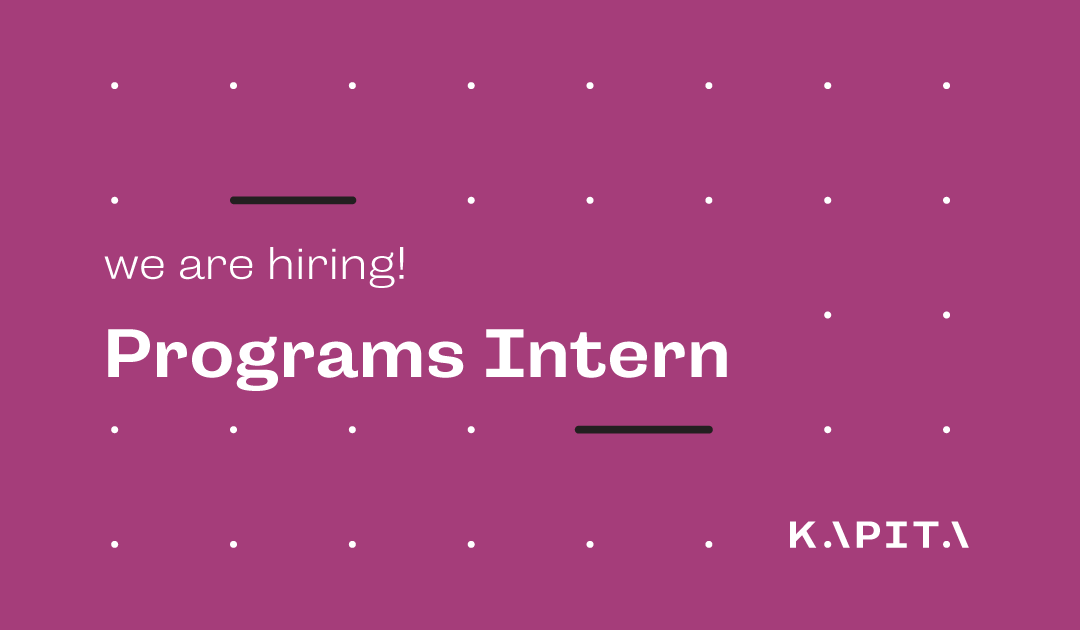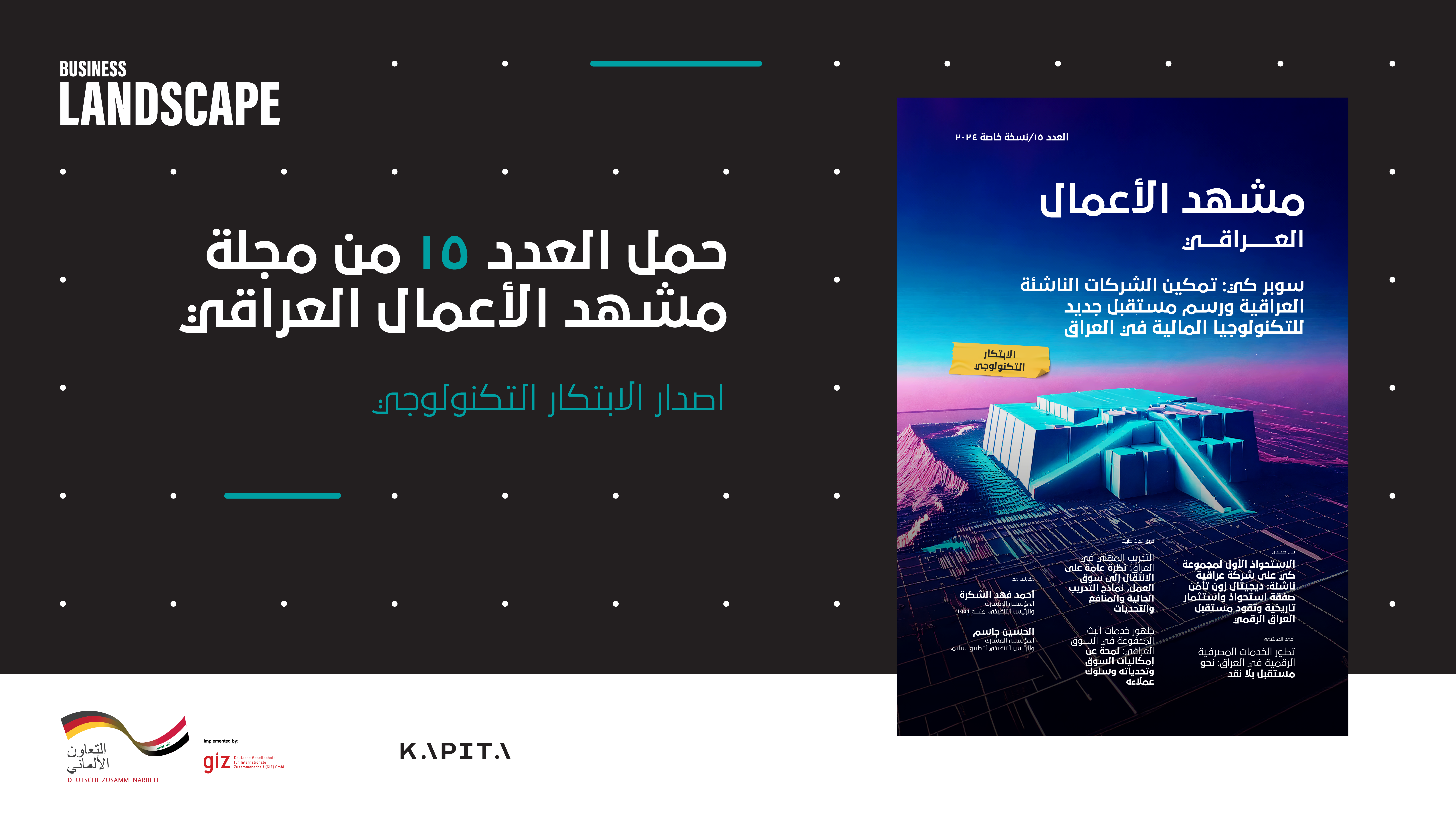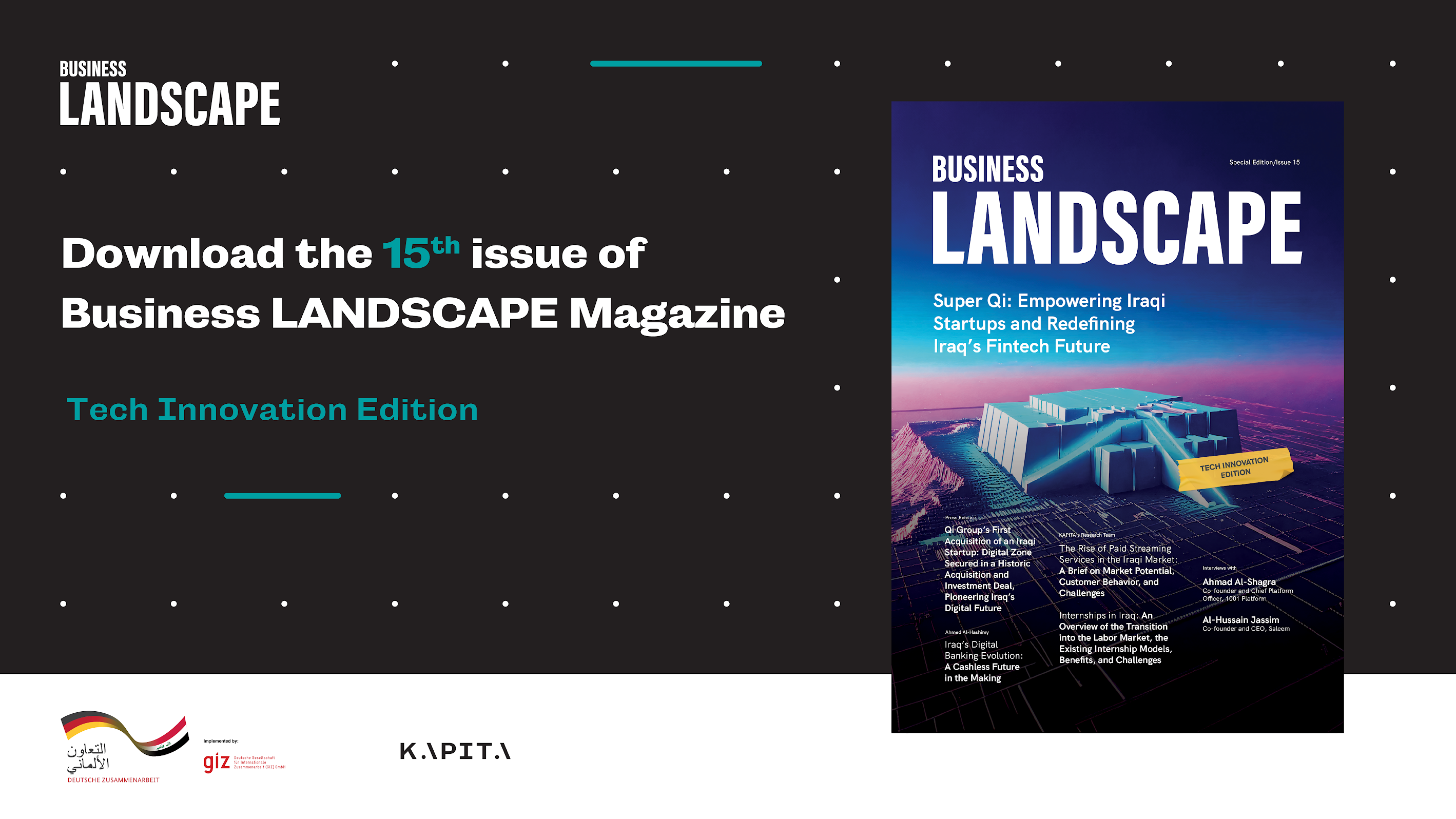Does Iraq Have A Digital Economy?
A Sectoral Study on the Opportunities, Challenges, and Regulations
In a world constantly advancing technologically and emphasizing the importance of digital skills, Iraq has begun its journey toward digital transformation. The country is gradually building its infrastructure and enacting laws and regulations to reflect current technological changes. As Iraq embarks on this path, it is crucial to assess the current state of its digital transformation, which comes from both the Iraqi government's commitment to modernizing infrastructure and services, private sector players, and the support of international institutions. This research aims to provide a comprehensive overview of Iraq's state of the digital economy across several key sectors directly impacted by these changes. These sectors include e-commerce, telecommunications, fintech, mobility, medtech, edtech, tourism, and agritech.
As this research examines these sectors, it also delves into key aspects such as the current status of each sector, relevant laws and regulations, initiatives undertaken by the Iraqi government and other entities, challenges hindering progress, and potential opportunities for further development. The insights presented are based on a thorough desk review, as well as interviews with key stakeholders and experts in their respective fields.
Additionally, this research reports on the attitudes of Iraqi youth and their engagement with the digital world, exploring their perceptions, challenges, and ambitions within Iraq's evolving digital economy.
Definition of the Iraqi Digital Economy
The digital economy in Iraq refers to the economic activities, transactions, and interactions that are facilitated by digital technologies, including the internet, computing devices, software applications, and data. It encompasses the production, distribution, and consumption of goods and services in a digitally connected and data-driven environment, as well as the transformation of traditional industries and business processes through the adoption of digital technologies.
Eight sectors in the Iraqi market have been the focus of digital transformation. Based on the data and insights collected, these sectors can be grouped into digitally integrated, which are retail, finance, telecommunication, and mobility, and digitally nascent sectors, which are education, healthcare, tourism, and agriculture.
Iraq’s evolution trajectory has caused it to leapfrog many development stages in different sectors. The evolutionary path of the internet after 2003 has been a key aspect of this transformation that caused sectors like e-commerce to leapfrog the website and app stages and develop as social commerce. Similarly, in the financial sector, fintech apps emerged as a way to overcome the underdeveloped banking sector and the lack of mobile banking.
Cash is still the main payment method across all different sectors undergoing digital transformation. Estimates still suggest that digital payment has not overcome 10% of transactions across multiple sectors such as e-commerce, q-commerce, ride-hailing, and others.
Laws and regulations remain the main challenge hindering the digital transformation across all the sectors. The outdated laws and regulations, obscurity, or absence of them have caused many tech-based business models difficulties to operate withing a legally well-regulated market.
Underdeveloped infrastructure has hindered the growth of digital economy. Underdeveloped roads, poor internet connectivity, and unreliable electricity grid are critically undermining the growth of digitally-enabled businesses.
Digital economy is significantly reliant on human resources and capacity building. Digital transformation of any sector cannot be realized without a digitally skilled workforce to implement. The lack of advanced digital skills and the digital illiteracy among youth is one of the main obstacles of businesses operating in the digital economy.
Digitally Integrated Sectors | Digitally Nascent Sectors |
Retail (E-commerce) | Education (EdTech) |
Finance (FinTech) | Healthcare (MedTech) |
Telecommunications | Tourism |
Mobility (Ride-hailing) | Agriculture (AgriTech) |
The key findings and discussion points from this extended research are as follows categorized by sector:
E-commerce
The landscape of e-commerce in Iraq can be classified into three types; classic e-commerce and social commerce, food delivery and q-commerce, and last-mile delivery.
Iraq's e-commerce is highly fragmented, with numerous merchants operating on social media platforms like Facebook and Instagram. Delayed internet access and the rise of mobile internet created a reliance on social media for commerce, making international approaches ineffective.
E-commerce activities occur under either non-existing or outdated legal frameworks. Iraq's legal framework lacks modern, specific legislation for governing the e-commerce sector, and there are no dedicated official bodies responsible for overseeing it. Government bodies, such as the Ministry of Trade, Central Bank of Iraq, the Ministry of Communication, and the Commission of Media and Communication are the main overseeing entities with occasional overlapping responsibilities.
Iraq's national development plans that are currently being implemented lack e-commerce-specific focus. The Iraqi government's strategies primarily focus on creating a foundation for economic growth, expanding services, and improving infrastructure. While not directly targeting e-commerce, these initiatives indirectly support its development. However, despite the sector's significance and potential economic impact, the government has yet to establish official representative bodies for e-commerce.
Progress of e-commerce is hindered by a weakened infrastructure that struggles to keep up with the rapid growth of the sector. The e-commerce landscape in Iraq faces significant logistical challenges due to an underdeveloped transportation infrastructure, difficulties in locating addresses, and complexities surrounding last-mile delivery.
Additionally, the prevalence of cash on delivery remains high, reflecting the broader issue of cash dependency. Cash on delivery is still the main payment method, while online payment is barely estimated by less than 10% of transactions on e-commerce platforms.Another key challenge is the lack of cooperation between payment gateways, which leads to high rates of transaction failures.
The food delivery service witnessed remarkable development in terms of the types of delivery services implemented, giving rise to two distinct models. In 2016, the first food delivery model was introduced, connecting customers with restaurants through aggregation apps where restaurants managed their own deliveries.
There is a direct relationship between population distribution and the demand for delivery services. The delivery sector is heavily influenced by population distribution, with Baghdad, Erbil, and Basra emerging as the most active regions compared to other governorates. Estimates indicate that around 100,000 to 120,000 orders are placed daily in Baghdad alone. It is also estimated that over 70% of these orders involve direct transactions between customers and restaurants.
Cash on delivery is still the dominant payment method. Digital transformation is still building up and Cash-on-delivery remains the most common payment method for both direct customer-to-restaurant orders and the majority of app-based services. estimated that e-payments account for only 10% of transactions.
The reliance on traditional shopping among Iraqis is gradually changing while the demand for q-commerce services increases as time passes. Q-commerce is a very rich market and the demand is very high for quick delivery. Numbers suggest that there are more than 50K order per day nationwide. It is expected to experience significant growth in the future in comparison to food delivery, which is projected to reach 100K by 2028. The average daily basket card for q-commerce ranges between IQD 15K to IQD 18K per day.
The delivery fleet is the main challenge of this sector. Companies face challenges due to a lack of commitment from drivers, who often work for only short periods. Additionally, motorcycles are frequently at risk of theft, vandalism, or seizure by the government. Further obstacles in this sector stem from security and accessibility issues, as security checkpoints, roadblocks, and local conflicts hinder bikers' ability to navigate, making it difficult or sometimes impossible to complete deliveries.
Social commerce dominates Iraq’s $6 billion last-mile delivery sector. Last-mile delivery is a major sector in Iraq, generating $6 billion annually, with an estimated 50,000 to 60,000 orders per day. These numbers refer to scheduled deliveries and do not include food delivery or Q-commerce. In terms of market share, social commerce dominates, accounting for 70% to 80% of orders, while cross-border commerce represents around 10%. The remaining market is made up of e-commerce platforms.
The last-mile delivery industry in Iraq is a price-pressured market. International companies like DHL, FedEx, and Aramex struggle to compete with local companies due to their higher costs. While these global firms focus on cross-border deliveries, local companies offer competitive low rates for within-country transportation, typically between $2 and $5 in Baghdad and other regions.
Telecommunications
The telecommunications sector is one of the most competitive and challenging industries to enter in Iraq. The telecommunication sector has some of the highest licensing costs, with fees reaching $1.25 billion for 15 years. Moreover, the industry demands extensive technological infrastructure, adding to the barriers for new entrants.
The regulatory framework governing telecommunications in Iraq is still underdeveloped. A major obstacle is the division between the Commission of Media and Communication and the Ministry of Communications, which has resulted in overlapping regulations, increased bureaucracy, and hindered the smooth transition needed for effective implementation and growth.
The evolution of internet technology has taken a different path in Iraq that leapfrogged through several generations. The 1st internet generation, emerging around 1999, primarily offered basic mobile services focused on voice and text. The 2nd generation, following 2003, expanded mobile coverage and introduced limited internet capabilities. By the 2010s, the 3rd internet generation brought significant improvements in internet connectivity and smartphone support. Finally, in 2021, the 4th internet generation emerged, greatly enhancing internet speeds and fueling the growth of online businesses.
The internet service provider (ISP) sector in Iraq employs over 10,000 full-time staff, along with an additional 15,000 technicians. In terms of gender distribution, the workforce is predominantly male, with men comprising 70% of the employees, while women represent 30%. Due to the labor-intensive nature of this sector, particularly in the technical work, male employment accounts for the largest percentage.
The mobile and wireless telecommunications sector is likely the largest private sector employer in Iraq, both in terms of direct and indirect employment. Data indicates that the three major telecom operators in Iraq provide direct employment for approximately 7,400 individuals. Beyond these direct roles, the sector also generates significant indirect employment opportunities. Around 107,000 individuals are employed indirectly through various roles related to the telecommunications industry, ranging from infrastructure support to service provision, highlighting the sector's broad impact on the Iraqi labor market.
FinTech
The sector has witnessed remarkable development in its infrastructure, and the number of electronic transactions. Data show that electronic transactions, driven by platforms like AsiaPay and ZainCash, surged from just over 1 million in 2018 to nearly 11 million by 2023 while the yearly value of electronic transactions using local cards also grew from 2.4 billion Iraqi dinars in 2017 to an estimated 9.6 trillion in 2023, with projections of over 20 trillion in 2024. This increase encompasses other aspects such as types of electronic cards, various bank accounts, and many others.
The adoption of cards has witnessed exponential growth in the last half-decade. Issued prepaid cards have surged from 6.2 million cards in 2017 to 10.7 million cards in 2022. On the other hand, debit cards increased from 127 thousand cards to 5.4 million cards in 2022.
The improvement of financial inclusion indicators varies among different metrics. The number of point of sales multiplied 10 times from 2017 to 2022 to reach over 10.7 thousand POS. Meanwhile, ATMs have only increased from 656 in 2017 to 2,223 in 2022.
The exchange rate volatility continues to be a challenge. The disparity between the CBI’s official exchange rate and the fluctuating parallel market rate creates additional obstacles for fintech companies, especially in managing international transactions.
The regulations of the Central Bank of Iraq can prove challenging for startups navigating this sector. Complying with CBI regulations often demands considerable effort and resources, making it a challenging process for many businesses. Additionally, the costs involved in meeting these regulatory requirements is burdensome. Consequently, businesses may face obstacles and delays in securing the necessary approvals and licenses from the Central Bank, which can hinder their operations and limit growth opportunities.
Mobility
The entry of players such as Careem and Baly into the Iraqi market has significantly contributed to the integration of technologies into the ride-hailing sector. It is estimated that daily ride-hailing orders, both online and offline, range from 8 million to 12 million in Baghdad alone. Across Iraq, approximately 250,000 taxi rides are booked online each day through ride-hailing apps. These app-based rides account for about 30% of the total, while traditional offline represent the remaining 70%. The ride-hailing market has experienced significant growth. In 2021, the number of online rides ranged from just 50,000 to 60,000 per day.
The digital transformation in the ride-hailing sector notably contributes to employment among the Iraqi workforce. Alongside the large number of drivers employed, staffing levels in the ride-hailing sector differ across companies. One key player employs 30 to 40 local staff, while another has a significantly larger workforce of 150 to 200 employees in its ride-hailing operations. Gender distribution is mainly even, with 50% male and 50% female employees. Compensation varies based on experience, with junior tech developers earning between $800 and $1,500, while senior tech developers average around $2,000.
MedTech
The healthcare sector is inherently hardware-intensive and continuously evolving but requires high capital investment. For example, a CT scanner costs between $250,000 and $350,000, and in Iraq, this can reach up to $450,000. MRI machines range from $500,000 to $1 million, while PET scanners are even more expensive. As a result, institutions are better positioned to advance the hardware aspect of healthcare than individuals.
Private hospitals and clinics are ahead of public institutions in adopting modern technologies. Iraq's 35,000 private clinics are driving the medical technologies in Iraq, serving over 350,000 patients daily. Key services such as online pharmaceutical delivery and in-home care via applications are gaining traction, while artificial intelligence (AI) is opening new opportunities in diagnostics, hospital management, and service delivery.
Iraq's healthcare sector is highly traditional, with minimal adoption of digital technologies such as clinical management software and electronic medical records. This reliance on paperwork often results in errors and delays in patient care. Furthermore, the absence of data protection regulations, similar to GDPR or HIPAA, leaves patient information vulnerable to misuse, leaks, and illegal trade, further compromising the efficiency and security of the healthcare system.
The medical field experiences a growing female presence, especially in certain roles. The average salaries in Iraq's medical technology private sector range from 800,000 to 1 million Iraqi dinars, with programmers earning slightly higher salaries, ranging from 900,000 to 1.5 million Iraqi dinars. In terms of gender distribution, two-thirds of those working in biomedical engineering are females, while one-third are males.
EdTech
The rapid increase in student enrollment is outpacing the capacity of schools to accommodate them. Between 2015 and 2019, the number of students enrolled in primary education in Iraq (excluding the KRI) grew from 4 million to 6.5 million. During this period, the number of primary schools increased from nearly 10,000 to over 17,000. In high schools, student enrollment went from 2.5 million in 2017 to 3.2 million by 2020, while the number of schools increased from 6,605 to 8,612.
The entire education technology sector is estimated to generate $100 million annually, with a yearly growth of $10 million. The tutoring market in Iraq has significant potential, with an average yearly subscription fee of around 150,000 Iraqi Dinars per student. There are approximately 28,000 schools in Iraq, including 4,000 private schools and kindergartens. Around 1,000 private schools are using learning management systems (LMS), with companies charging an average yearly subscription of $10 per student.
The regulatory framework in Iraq presents more obstacles than support for EdTech startups, making operations more challenging. The existing legal framework includes specific regulations that can be interpreted differently. Separate licenses are now required for each student segment. EdTech platforms are granted one license and allowed to serve only one segment of students based on that license. To serve additional segments, these platforms need to obtain further permissions, which generates more obstacles than solutions.
Tourism
The sector can be categorized into online tour booking for both local and international tourists, online visa services, flight reservations, and companies offering combined services such as visa and flight bookings, along with accommodation and event planning.
The digital transformation of the tourism sector has expanded online services and unlocked new market opportunities. The overall market size is valued at approximately $4 billion, with $2 billion coming from flights, $1.5 billion from hotels, and $0.5 billion from services like visas and transfers.
A significant issue with unregulated activity in Iraq’s travel and tourism sector highly impacted this sector. A large portion of companies operate without proper licensing. In Baghdad alone, nearly half of the estimated 2,000 travel and tourism companies are unlicensed, highlighting the extent of illegal operations in the industry.
The lack of structured regulations is leading to a costly and unorganized taxation system, which challenges emerging startups. A significant challenge for these companies is the high cost of license renewal, estimated at 5% of their total gross profit, making it particularly difficult for startups to enter the market. Additionally, the complexity of the tax system and its means of implementation poses further issues, which adds to the financial strain on businesses in the tourism sector.
The lack of data integration for Iraqi airlines places further challenges on the digital infrastructure of the tourism sector. The integration of technologies and modern solutions in this sector remains very nascent. Current travel agencies and applications lack access to Iraqi airline data via API, preventing them from integrating flight information into their platforms. Therefore, the level of digitization in the travel and tourism industry is still minimal.
The employment opportunities between males and females are unevenly distributed in the tourism sector despite the numerous opportunities. The tourism and travel sectors are predominantly male-dominated, with women making up only 20% of the workforce, primarily in customer service roles. In travel agencies alone, there are approximately 1,800 employees, while Baghdad Airport employs around 8,000 individuals. Salaries in these sectors, particularly for tech-oriented roles, range from IQD 700,000 to $1,500.
AgriTech
The agricultural sector is the least digitally integrated of all sectors. The agriculture sector, particularly in its traditional form, is predominantly driven by farmers who rely on long-established practices and basic machinery. Many farmers are reluctant to adopt new methods due to limited knowledge and a tendency to avoid risk.
Short-term government vision and reliance on international efforts. While government initiatives have helped improve crop variety and production capacity, they fall short in addressing the need for technological advancements in the industry, offering short-term fixes rather than sustainable, long-term solutions. The current state of agritech is primarily a product of international organizations’ efforts in Iraq.
The majority of workers in the agriculture sector engage in informal and unregulated jobs. Informal employment makes up the majority of workers in the agriculture sector. A study shows that 8.4% of the total surveyed population is employed in the agricultural, forestry, and fishing industries, representing 725,397 individuals. These industries rank among the key branches of economic activity in Iraq. However, informal employment dominates this sector, with approximately 695,652 workers, which is nearly the entire workforce.
The lack of data on Iraq's agricultural sector makes it difficult to accurately assess the size of the agritech market. However, comparing investment levels in the Middle East with those in Iraq, estimates suggest that the agritech market in Iraq can be in the size of billions of Iraqi dinars, with potential growth of 50-60% in the coming years. Despite this growth potential, the market share remains small due to low adoption rates among farmers and limited competition, which currently accounts for only 5-10% of the market.
The agriculture sector, predominantly male-dominated, has significant potential for employment growth. The industry is set for substantial expansion, with a projected 50% growth that could result in a 200% increase in employment opportunities. Currently, the workforce is made up of 60% males and 40% females, indicating a considerable presence of women in the sector.
Youth Perception and Challenges Assessment
There is a strong interest in the digital economy, reflecting a growing shift among youth towards technology-driven careers. Over 80% of respondents showed strong interest in working within the digital economy, particularly in e-commerce and educational technology. This substantial agreement among respondents highlights a widespread recognition of the vital role digital skills play in today’s economy. Approximately 90% believe that enhancing their digital skills will positively impact their careers and salaries, reflecting a broad recognition of the importance of digital literacy.
This widespread optimism reflects the public's high expectations for the ongoing digitization efforts in both the public and private sectors. More than 80% expressed optimism about Iraq's digital transformation initiatives. This indicates a willingness to embrace the digital era, acknowledging the advantages it can offer. The survey highlights the strong potential for growth in both public and private sectors, which is needed for the public to fully benefit from digital transformation. Around 50% of participants expressed a neutral stance on the level of digital transformation across various industries.
There is a need to align educational programs with in-demand skills to better support career advancement and professional development. Most participants seek to improve their project management skills, followed by a strong interest in leadership, communication, data analysis, and operations management, reflecting the demand for both soft and technical skills in the job market. Despite the fact that many educational institutions have outdated curricula and poorly equipped computer labs, they still manage to overcome such limitations. The survey response shows that between 25% and 32% of survey participants rated the digital education curriculum, infrastructure, and teaching quality as "average" to "good.". Educational institutions may be overly focused on theoretical instruction, neglecting to offer sufficient practical experience for their students. When asked about the differences between informal training and traditional education, most feedback highlighted the practical, up-to-date, and higher-quality nature of informal training.
The key finding is that video-based and social learning platforms dominate skill development among youth. A trend in youth preferences for digital skill development platforms, with YouTube being the top choice, used by 78% of individuals to boost their digital skills. Key gaps identified include insufficient hands-on training, outdated curricula, and limited exposure to emerging technologies, which are seen as critical areas for improvement. About 57% of respondents identified this gap, and 47% pointed out the lack of a curriculum updated to match current industry trends.
Digital Competency Self-assessment Tool (DigCompSat)
Information and Data Literacy: Participants showed the highest median score in this area, indicating strong proficiency in accessing, evaluating, and using digital information. This reflects a solid foundation in navigating and managing digital information efficiently.
Problem Solving: With a high median score, participants demonstrated strong problem-solving skills, particularly in solving technical problems and identifying technological responses, though creative use of digital technologies was slightly weaker.
Communication and Collaboration: This area also had a high median score, showing that participants are proficient in interacting through digital technologies and netiquette, but they showed more difficulty with managing digital identity and collaborating digitally.
Safety: Safety competencies had a moderate score, with participants excelling in protecting personal data and privacy. However, there is room for improvement in protecting devices, the environment, and health and well-being in digital contexts.
Digital Content Creation: This area had the lowest median score, indicating that participants need more development in digital content creation skills, particularly in programming and understanding copyright issues, despite showing some proficiency in basic content creation.




